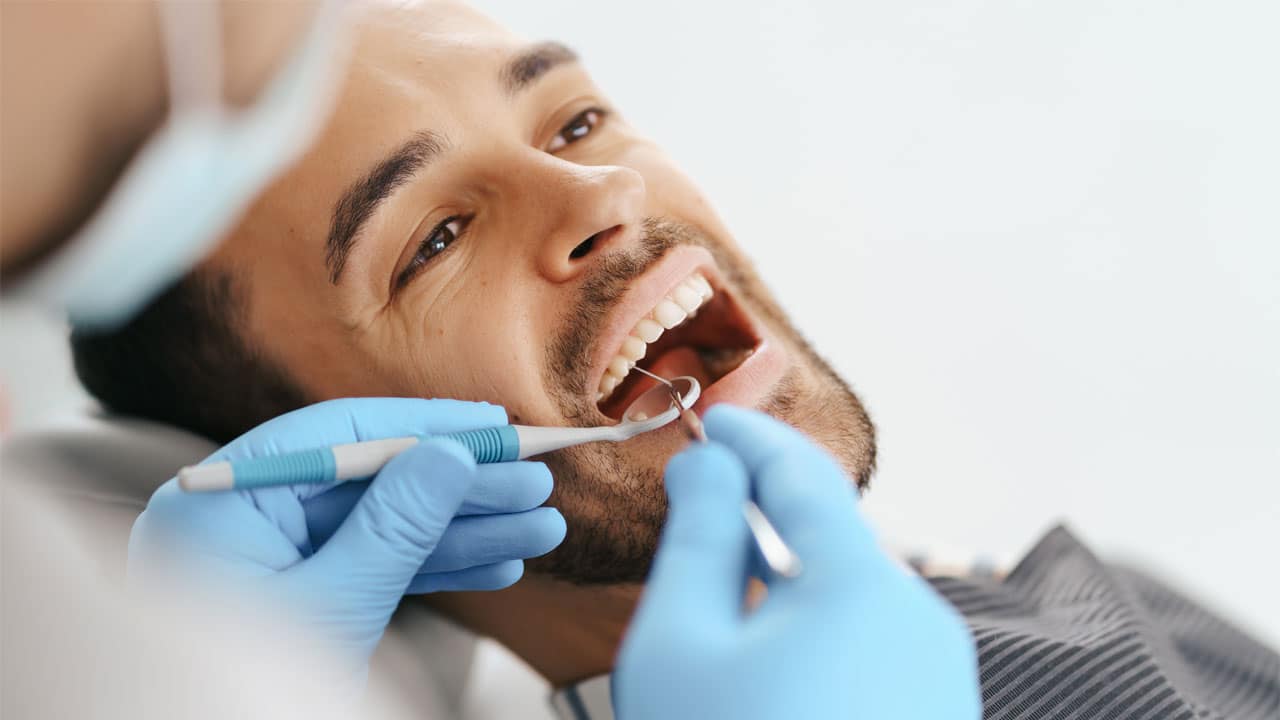
Periodontal charting is an essential aspect of oral health care. Unhealthy teeth and gums can cause pain and severe health complications if left untreated. The qualified staff at Caputo Dental performs regular gum pocket depth measurements to develop a comprehensive periodontal chart to help you maintain the best oral health possible.
What Is Periodontal Charting?
A periodontal chart is a graphic chart your dentist uses to organize information about the space between the tooth and the gum tissue surrounding it.
Your dentist uses a small probe with markings to measure the pockets around your teeth and between the gums. This distance is used to distinguish the overall health of your gums. For each tooth, six different measurements are recorded.
Healthy gums have a measurement of 1-3 mm. Areas of concern have pocket measurements of 4 mm or more. If there is any sensitivity during probing, this also serves as a red flag. Areas with larger measurements typically have high sensitivity.
The larger the pocket around the tooth, the bigger the concern. More space means more plaque buildup, which could lead to gingivitis. If measurements reach 7 mm, periodontitis may need gum flap surgery to eliminate tartar, plaque, and bacteria to control the infection.
Alongside these measurements, your dentist also checks gum health by looking at gum recession and bloody gums. Bleeding gums and gum recession may be signs of gingivitis (inflammation of the gums).
Understanding Periodontal Chart Measurements
During a dental exam, your dentist inserts the gum probe and notes down the measurements on a chart with lateral and top-down images of each of your teeth. The measurements indicate various levels of gum health and inform your dentist’s recommendations for treatment.
- 0-3 mm no bleeding: Perfect oral health.
- 1-3 mm with bleeding: Early signs of gingivitis. Work on a better home oral hygiene plan with your dentist and schedule recurring dental visits.
- 3-5 mm no bleeding: Early signs of gum disease. Deep cleaning appointments need to be scheduled.
- 3-5 mm with bleeding: Early signs of gum disease. Maintain 3-5 deep cleaning appointments a year with your dentist and ramp up at-home oral hygiene practices.
- 5-7 mm with bleeding: A sign of bone loss and tissue damage. A specialized dental care plan will need to be made with your dentist.
- 7 mm + with bleeding: Advanced stage of periodontal disease. Immediate aggressive treatment and care is needed.
The Importance of Healthy Gums
According to the CDC, periodontal disease and tooth decay are the top threats to oral health. Gum disease can be painless and often go unnoticed. Periodontal disease occurs when gingivitis is left untreated.
Once the pockets surrounding the teeth reach 5 mm or larger, the risk for infection increases, leading to advanced cases of periodontitis where the bones pull away from the gums and loosen, risking tooth loss.
Statistics show about 50% of adults suffer from periodontal disease, and as we age, these numbers rise. Oral health is important due to its direct link to the cardiovascular system. Studies show that people with poor oral health also suffer from a wide variety of other health concerns such as heart disease, Alzheimer’s disease, and dementia.
How to Treat Gum Disease
The best way to prevent periodontitis is to maintain good oral hygiene, brushing twice a day for two minutes each and flossing daily. Visit your dentist twice per year for an exam and cleaning to keep your periodontal charts updated. Be careful of the foods you eat and reduce your intake of sugary foods to keep your gums healthy.
There is no way to reverse periodontitis, but gingivitis can be reversed with the help of a dentist and a healthy oral hygiene plan.
If you are experiencing tender or bleeding gums, call (630) 922-1311 today to schedule a check-up and dental exam to evaluate your oral health.